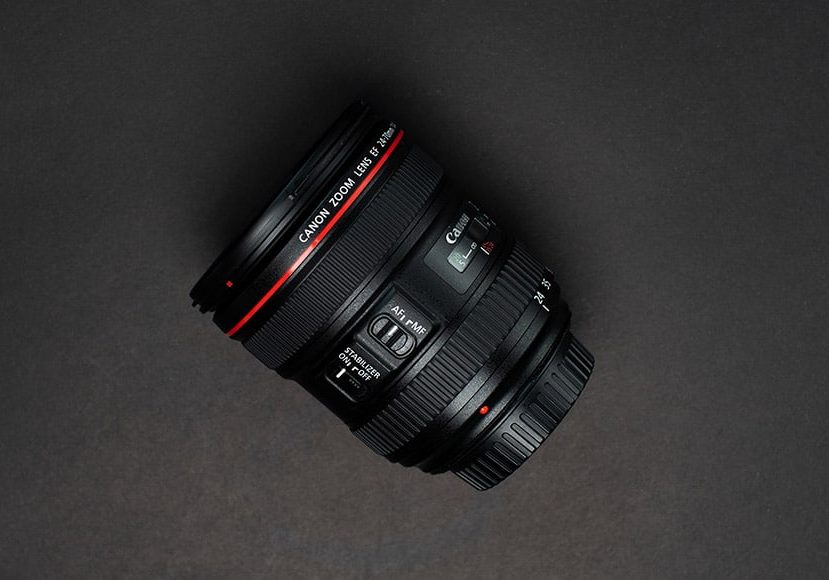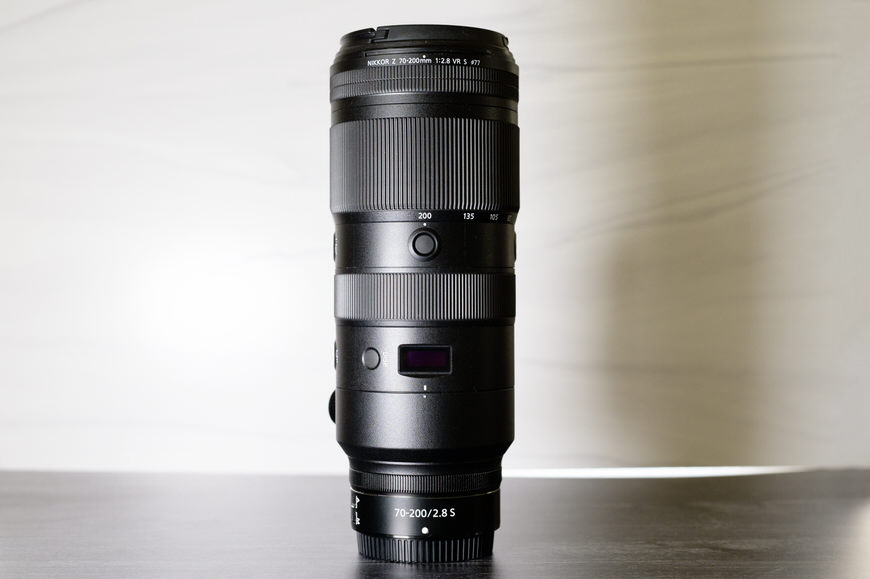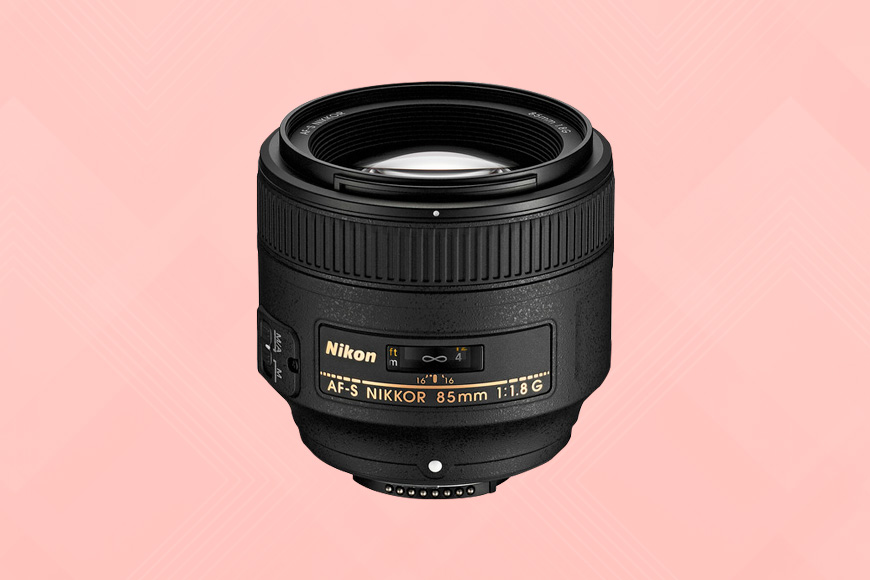
This guide will help you find the best lenses for event photography.
It’s a solid kind of photography gig. There are events all the time.
However, each event has its unique properties, and often you don’t know what they are until you arrive.
You need versatile lenses that will have your back in whatever situation you land in.
This article will let you know what those lenses are and why.
Just something to be aware of: Our default camera system in this article will be the Nikon Z, but links to the other main brands will be included at the bottom of each section.
What Are the Best Lenses for Event Photography in 2024?
24-70mm f/2.8 (Best All-Around Event Photography Lens)

- Good optical quality
- Versatile focal range
- Well built
- Fast aperture
- Can be bulky
- Limited reach
If you can afford only one lens, this is the one to start with. I’ve shot plenty of events with just a single camera body and one of these zoom lenses attached to it.
Overall, it has the best balance of speed, range, and quality that you’ll find, and every manufacturer makes a professional lens of this size and spec.
A focal length of 24mm at the wide end allows you to photograph a room and give a sense of the size of the venue and the number of people attending.
It also helps you get shots of people interacting at the event, allowing you to get close while still fitting plenty of people into the frame.
At the long end, 70mm will let you shoot performers/presenters onstage, décor details, and any portraits you need to take care of.
The range in between that covers all your storytelling needs.
It’s a versatile, flexible go-to lens, and they’re generally very well-built and designed.
Nikon FX [Amazon | B&H] | Nikon DX [Amazon | B&H] | Canon EF [Amazon | B&H] | Canon APS-C [Amazon | B&H] | Canon RF [Amazon | B&H] | Sony FE [Amazon | B&H] | Sony E [Amazon | B&H] | Fujifilm [Amazon | B&H] | Micro Four-Thirds [Amazon | B&H]
70-200mm f/2.8 (Best Telephoto Event Photography Lens)


Credit: Steve Vansak
- Good image quality
- Image stabilization
- Great compression capabilities
- Versatile
This is the second lens you should buy if you’re shooting events.
If you pair this with the 24-70mm, you can cover nearly anything that comes your way as an event photographer.
Once you get above 70mm, you have a lens with a focal length that ensures you can shoot distant things that you can’t get quickly to in the moment, and those all-important presenters.
While you can shoot online presentations with a 24-70, you can’t get the background blur that this lens’ ability to compress a scene gives you. A 70-200mm helps you separate a subject from its background, giving you a sharper-looking, cleaner shot.
This is also a handy focal range to have in your arsenal if you’re shooting an event that is not as well attended as was hoped.
By compressing the scene, you can easily make an event look busier than it really is, which will make your client happy.
There aren’t many exact equivalents for APS-C shooters, but the nearest equivalents are in the links below.
Nikon FX [Amazon | B&H] | Nikon DX [Amazon | B&H] | Canon EF [Amazon | B&H] | Canon APS-C [Amazon | B&H] | Canon RF [Amazon | B&H] | Sony FE [Amazon | B&H] | Sony APS-C [Use the Canon APS-C with a converter] | Fujifilm [Amazon | B&H] | Micro Four-Thirds [Amazon | B&H]
35mm f/1.8 (Best Prime Lens for Event Photography)


Credit: Mark Condon
- Affordable prime lenses
- Wide aperture
- Lightweight and compact
- Natural perspective
- Great image quality
For anyone who shoots smaller events or in venues that are dimly lit, 35mm f/1.8 or 50mm f/1.8 prime lenses can be good to have.
F/1.8s are also very portable and easier on the wallet.
They tend to be smaller, lighter, and considerably less expensive versions of the manufacturer’s f/1.4 glass.
With a 35mm lens, you have a natural, human-eye perspective to play with. This means that it’s a great all-around focal length that will help you capture pretty much anything.
It’s especially good for documenting human interaction at events, such as delegates networking or socializing, or, for example, shooting each participant in a panel discussion.
That fast aperture is also extremely handy if the event venue has low light or changeable lighting conditions, which they can often do these days as event organizers get more creative with their lighting.
Nikon FX [Amazon | B&H] | Nikon DX [Amazon | B&H] | Canon EF [Amazon | B&H] | Canon APS-C [Amazon | B&H] | Canon RF [Amazon | B&H] | Sony FE [Amazon | B&H] | Sony APS-C [Amazon | B&H] | Fujifilm [Amazon | B&H] | Micro Four-Thirds [Amazon | B&H]
14-24mm f/2.8 (Best Wide-Angle Lens for Event Photography)


Credit: Jesse La Plante
- Wide aperture
- Good optical quality
- Robust design
- Good for small venues
- Limited reach
- Can be bulky
This kind of wide-angle zoom lens (which can also be 16-35mm, depending on the brand) is very useful if you’re shooting smaller venues, but it can also be a bonus in larger venues.
If you’re in small places, things can get tight, so you’ll need this kind of perspective to be able to fit enough into your frame.
In the bigger places, you can use this lens to really emphasize the scale of the venue and, if it’s full, also highlight the number of people there.
It’s also a great focal range for highlighting the event’s interior design or shooting the architecture of the building where the event is being held.
Nikon FX [Amazon | B&H] | Nikon DX [Amazon] | Canon EF [Amazon | B&H] | Canon APS-C [Amazon | B&H] | Canon RF [Amazon | B&H] | Sony FE [Amazon | B&H] | Sony APS-C [Amazon | B&H] | Fujifilm [Amazon | B&H] | Micro Four-Thirds [Amazon | B&H]
85mm f/1.8 (Best Portrait Lens for Event Photography)


- Fast aperture
- Good optical quality
- Ability to use depth of field
- Good low-light performance
- Limiting beyond portraits
It’s often the case at events that you might need to shoot some portraits.
In this case, having an 85mm f/1.8 in your bag is very handy.
Events are often busy, with many people milling about, and many interior design elements might clash, making them look quite messy.
So, it’s essential to have a lens that’s long enough to compress the scene, the perfect length for portraits (minimal distortion), and has an aperture that will help you separate your subject from their background.
You could also opt for a 105mm. That’s a matter of both personal preference and how much room you have to shoot.
Nikon FX [Amazon | B&H] | Nikon DX [Amazon | B&H] | Nikon Z DX [Amazon | B&H] | Canon EF [Amazon | B&H] | Canon APS-C [Amazon | B&H] | Canon RF [Amazon | B&H] | Sony FE [Amazon | B&H] | Sony APS-C [Amazon | B&H] | Fujifilm [Amazon | B&H] | Micro Four-Thirds [Amazon | B&H]
Fisheye Zoom (Best Specialty Lens for Concert Photography)


- Creative
- Fun
- Good optical quality
A fisheye lens will push your creative buttons.
You could end up with something unique, although it’s equally likely you’ll end up with something unusable.
Definitely not a main lens, but a fun one to have which can help you exaggerate an element (or some elements) of an event: its size, its location, and the number of attendees.
You need to be very intentional about your composition, though, and work hard to create a focal point for the image.
You should note that there’s no Nikon Z version of this kind of lens. The link above is Nikon FX (which is why it’s not included below).
There’s also no Sony equivalent to that Nikon FX lens, although there are a couple of manual-focus primes.
Canon EF [Amazon | B&H] | Canon APS-C [Amazon | B&H] | Nikon DX [Amazon | B&H] | Micro Four-Thirds [Amazon | B&H]
What Lenses Should I Have in My Event Photography Kit?
The amount of lenses in your photography gear bag will depend on your budget and the particular needs of the shoot.
Here are some recommendations for the kinds of kits you could put together, based on how many lenses you take.
The Single Lens Event Photography Kit
If you just have the space or budget for one lens in your kit, then it has to be a 24-70mm f/2.8.
You get a fast lens that works well in low light, and a versatile focal range that’s wide enough to let you capture the scene and zooms in enough to get details and close-ups of speakers.
I’ve photographed many, many events with only this lens, but you can get into issues if you can’t get close enough to presenters or if you’re shooting bigger events.
So, this is a bare-bones kit. As soon as you can, you need to make yourself…
The Two-Lens Event Photography Kit
With two lenses (especially if you have each on a separate camera body), you should be able to comfortably cover pretty much any event, as long as they’re these two:
A 24-70mm f/2.8 and a 70-200mm f/2.8.
The 24-70mm has you covered for all of your wide shots, contextual shots, and anything where you need to include more than one person.
That could be attendees networking, food being served, registration, or capturing all the members of a panel discussion.
Then, the 70-200mm has you covered for everything else.
So, anything you see happening far away that you don’t have time to get close to, and shots of people presenting onstage.
With a 70-200mm you can use lens compression to isolate a speaker from their background, and really make them pop.
The Three-Lens Event Photography Kit
Your kit bag will already contain the 24-70mm and the 70-200mm and if you’re going to take a third lens, you’ll need to think about the specifics of the event.
If it’s going to take place in a particularly big venue, it would be worth taking a wide-angle lens like a 14-24mm f/2.8 or 16-35mm f/2.8.
If you might also need to take portraits of the delegates, then I’d recommend taking an 85mm f/1.8.
That fast aperture is extremely helpful for using blur to isolate your subject from often busy or messy event backgrounds.
Specialty Lenses
If you want (or your client would like) you to get creative, you could consider taking a specialty lens.
A macro lens can help you capture details shots of signage or event décor.
You could also use a fisheye lens to provide a unique, distorted perspective that emphasises the size of an event venue, or the amount of attendees.
Or, you could take a tilt-shift lens. These can help you photograph the architecture or layout of an event with the correct perspective.
You can also use them to use depth of field creatively, with areas of deep blur and sharp focus on specific points of interest.
The Best Lenses for Event Photography by Brand
Here is a selection of the lenses you should have in your event kit bag, sorted by brand.
The Best Canon Lenses for Event Photography
- Sigma 24-70mm f/2.8 DG OS HSM Art Lens for Canon [Amazon | B&H]
- Canon EF 24-70mm f/2.8L II USM [Amazon | B&H]
- Canon EF 70-200mm f/2.8L IS III USM [Amazon | B&H]
- Canon EF 16-35mm f/2.8L III USM [Amazon | B&H]
- Canon EF 50mm f/1.8 STM [Amazon | B&H]
The Best Nikon Lenses for Event Photography
- Nikon AF-S NIKKOR 24-70mm f/2.8E ED VR [Amazon | B&H]
- Nikon AF-S NIKKOR 70-200mm f/2.8E FL ED VR [Amazon | B&H]
- Nikon AF-S NIKKOR 14-24mm f/2.8G ED [Amazon | B&H]
- Nikon AF-S NIKKOR 50mm f/1.8G [Amazon | B&H]
The Best Sony Lenses for Event Photography
The Best Fujifilm Lenses for Event Photography
The Best Micro Four-Thirds Lenses for Event Photography
- Panasonic LUMIX G 12-35mm F2.8 [Amazon | B&H]
- Olympus M.Zuiko Digital ED 40-150mm f/2.8 PRO [Amazon | B&H]
- Panasonic Lumix G Leica DG Nocticron 42.5mm f/1.2 [Amazon | B&H]
FAQs About the Best Lenses for Event Photography
What size lens is best for event photography?
The best size lens is the one that will allow you to shoot the event you need to,
Generally speaking, you tend to need zoom lenses with versatile focal ranges that will let you shoot both room scenes and distant subjects. A 24-70mm f/2.8 is a good place to start.
What is the best lens for indoor event photography?
Depending on the size of the venue, you need either a 14-24mm f/2.8 or a 24-70mm f/2.8 and a 70-200mm f/2.8.
With those lenses, you’d have every eventuality covered.
What is the best prime lens for event photography?
The best prime lenses would be a choice between a 35mm for general photography, or an 85mm for taking portraits.
If you wanted a prime specifically for taking pictures of presenters onstage, a fast 200mm prime would be perfect.
What is the best lens filter for event photography?
You don’t need much in the way of filters to shoot an event.
I normally use a UV filter just as a protective barrier for the lens, shielding it from any scratches, dust, or moisture. Events, indoor or outdoor, can be hectic, so it’s essential to protect your lens.
Otherwise, you can use a polarizing filter, especially if you’re outside. They reduce glare and reflections and can also make colors more saturated, which is ideal for outdoor events, where bright sunlight can bleach the colors.
What is the best lens for event videography?
Ultimately, the best lenses for taking event footage are the same as those for taking stills at events, and for the same reasons.
One thing you need to make sure of, though, is that the lens you choose has image stabilization.
Is a 35mm lens good for event photography?
It’s a good focal length for some parts of events.
As it gives you a storytelling perspective, it’s great for shooting the parts of an event that are focused on human interaction.
So, for example, people networking, socialising, registration, and panel discussions or fireside chats.






